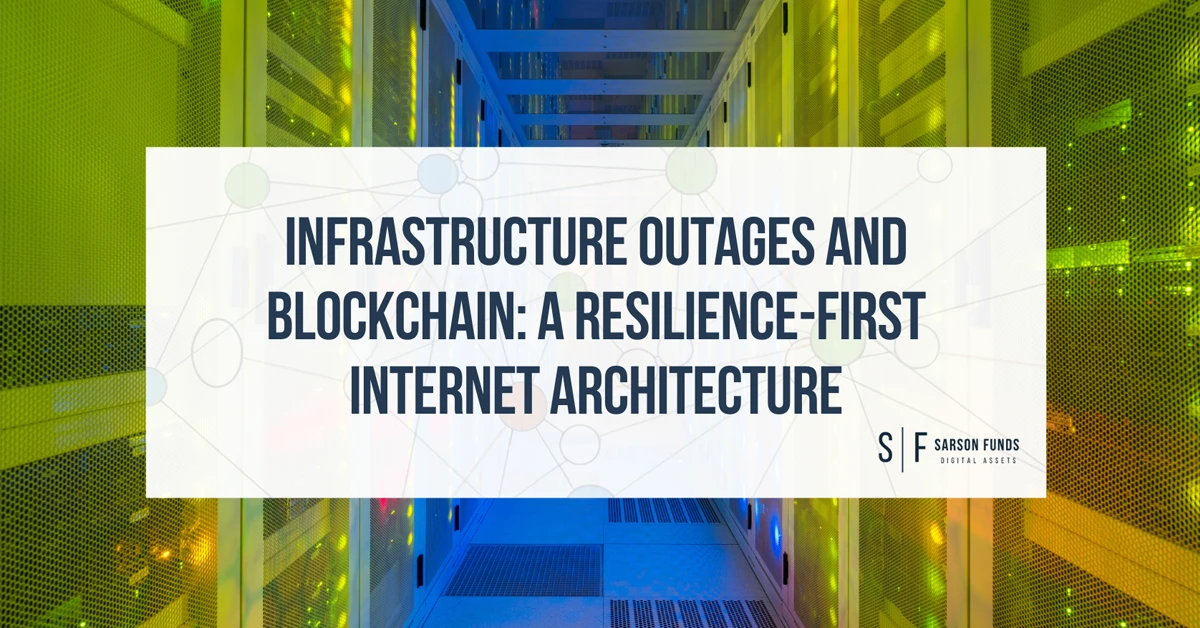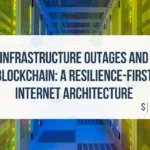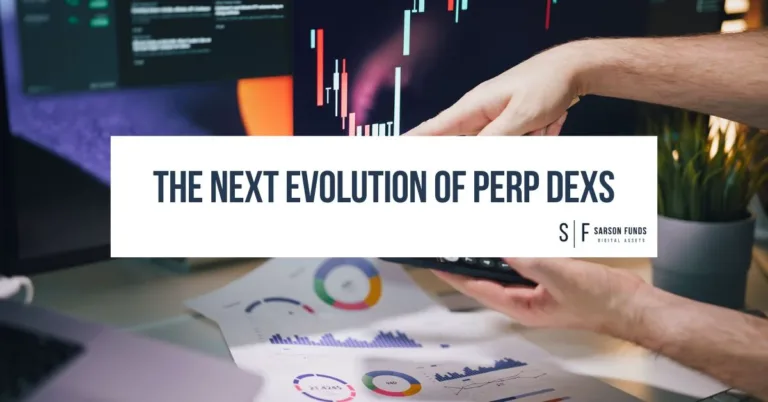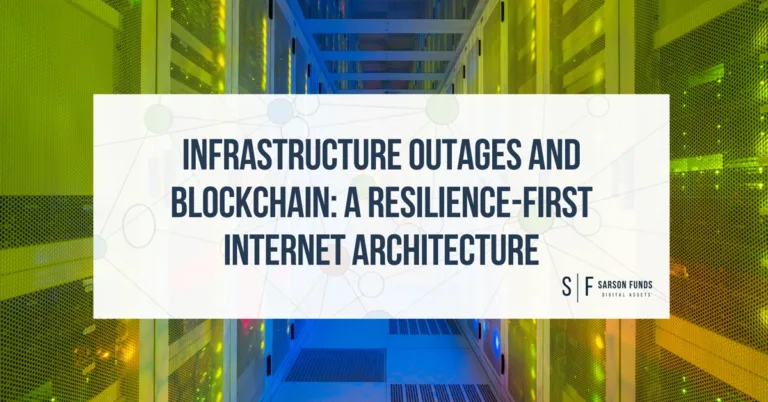
In today’s world, nearly everything depends on digital infrastructure. From financial transactions and hospital systems to emergency communications and your morning coffee order, a functioning internet backbone is no longer a luxury. It is critical infrastructure. Yet, recent high-profile outages show how fragile this foundation remains. Centralized systems, while efficient, are increasingly vulnerable to single points of failure. And when one node fails, the ripple effects can be felt around the world.
Blockchain-based infrastructure is offering a compelling alternative. By decentralizing the core layers of connectivity and computation, blockchain networks are architected for resilience. This shift in design may be the internet’s best answer to an increasingly unstable digital status quo.
Recent Outages Underscore Centralized Vulnerabilities
The last two years have made it painfully clear just how exposed we are to infrastructure breakdowns:
-
- Cloudflare – Nov. 18, 2025: A configuration error in a core routing layer caused a global service disruption. Cloudflare handles around 20% of the world’s web traffic. The outage impacted trading platforms, websites, and APIs, with losses estimated at $1.6 billion in financial transactions alone.
- Azure – Oct. 29, 2025: A configuration change in Azure Front Door triggered global service failures across Azure’s network, affecting Microsoft 365, Xbox Live, airlines, and other major systems. Azure acknowledged the disruption lasted over eight hours.
- AWS – Apr. 2025: A power failure in a Northern Virginia data center set off cascading outages across major cloud services, affecting banking apps, retail systems, and authentication platforms.
- CrowdStrike – Jul. 19, 2024: A flawed update crashed over 8 million Windows machines worldwide, triggering what some analysts called one of the largest IT failures in history. Businesses, airports, and hospitals were left scrambling.
Each of these outages revealed the same core issue: our dependence on centralized providers has created fragile digital supply chains that are ill-equipped to handle failure at scale.
| Event | Date | Key Impact | Est. Scope / Cost |
|---|---|---|---|
| Cloudflare Outage | Nov. 18, 2025 | Routing error disrupted ~20% of global web traffic | ~$1.6 billion lost in trading volume |
| Azure Outage (AFD Error) | Oct. 29, 2025 | AFD misconfiguration caused global service disruptions across Azure ecosystem | 18,000+ user reports; major services impacted |
| AWS Outage (Power Loss) | Apr. 2025 | Power failure caused cascading cloud service outages | Widespread platform disruption (cost unreported) |
| CrowdStrike IT Outage | Jul. 19, 2024 | Security update crash took down millions of Windows systems globally | ~8.5 million systems affected worldwide |
Why Blockchain Changes the Equation
Unlike traditional systems where one point of failure can paralyze services, blockchain networks are built to operate even when parts of the system go dark. Their strength lies in decentralization. Through peer-to-peer architecture and consensus algorithms, blockchain systems replicate state across thousands of globally distributed nodes.
Many networks employ Byzantine Fault Tolerance, meaning they can keep running securely even when a significant portion of nodes is compromised or unresponsive. This model eliminates the bottlenecks and administrative choke points that make Web2 infrastructure brittle and easy to exploit.
Instead of promising uptime with complex failover policies, blockchain protocols deliver it through architectural resilience.
From Theory to Practice: The Rise of Decentralized Infrastructure
A new class of blockchain-native projects is applying these principles to real-world infrastructure:
-
- Manifest Network blends blockchain fundamentals with enterprise-grade cloud infrastructure. It offers a sovereign, decentralized alternative to traditional cloud providers, reducing vendor lock-in and enhancing data availability.
- Pipe Network is reimagining content delivery networks (CDNs) by tokenizing bandwidth contributions. This incentivizes edge-node participation from users around the world, minimizing latency and avoiding reliance on massive, centralized data centers.
These platforms don’t just represent theoretical improvements. They are operational, scalable, and built to withstand the types of failures that cripple legacy providers.
Decentralized Solutions for Storage and Streaming
Beyond general infrastructure, specialized sectors are embracing decentralization:
-
- Theta Network decentralizes video streaming by separating media caching from transaction settlement. This architecture improves efficiency without compromising security.
- Arweave introduces the “permaweb,” a blockchain-based protocol that offers permanent, endowment-backed storage. Its blockweave structure enables long-term data persistence alongside decentralized computation.
These systems prove that decentralized design can meet the performance demands of high-bandwidth applications while remaining censorship-resistant and fault-tolerant.
A More Resilient Digital Future
These outages are not isolated incidents. They are warning signs. The internet’s foundational architecture is aging, while innovative attack techniques are rapidly evolving and the stakes are higher than ever.
Blockchain infrastructure offers a new model. It doesn’t eliminate all risk, but it changes the equation. By distributing control, validating transactions through consensus, and rewarding resource contributions, these networks build resilience from the ground up.
As projects like Manifest, Pipe, Theta, and Arweave continue to grow, they point to a more stable digital economy. One where service continuity is earned through engineering, not merely promised by policy. The next generation of the internet will be built on infrastructure that is open, sovereign, and designed to endure.
Disclosures: This article is for informational purposes only and should not be considered financial, legal, tax, or investment advice. It provides general information on cryptocurrency without accounting for individual circumstances. Sarson Funds, Inc. does not offer legal, tax, or accounting advice. Readers should consult qualified professionals before making any financial decisions. Cryptocurrency investments are volatile and carry significant risk, including potential loss of principal. Past performance is not indicative of future results. The views expressed are those of the author and do not necessarily reflect those of Sarson Funds, Inc. By using this information, you agree that Sarson Funds, Inc. is not liable for any losses or damages resulting from its use.









